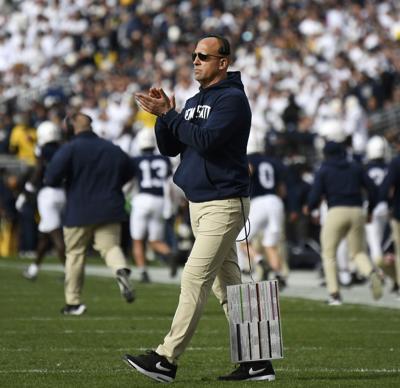Nittany Nation has plenty to worry itself over as Penn State begins spring practice this week.
With three new coordinators, spring ball could have a remedial element, not unlike the introductory stages of learning a new language.
The defensive coordinator being replaced, from last year, may have been a genius.
There’s the wide receiver group, whose 2023 performance could be described as barren.
There are two new starting offensive tackles to identify, and three new starting cornerbacks. A new center, a new kicker, a new linebacker, etc.
The schedule includes last year’s national finalist (Washington), Ohio State, back-to-back trips to USC and Wisconsin and an apparently dangerous non-conference opener (West Virginia) on the road.
On the macro level, the expanded college football playoff means James Franklin’s seat will warm if the Lions don’t make it more than it will cool if they do.
There’s a concern bigger than all of those, it says here.
Penn State’s 2022 recruiting class included three five-star recruits (QB Drew Allar, RB Nick Singleton, DE Dani Dennis-Sutton) and 12 four-stars.
(All recruiting data here comes from 24/7 Sports.)
Allar was the highest-ranked player in the country at the most important position on the field. Singleton was Gatorade National Player of the Year.
Among the four-stars were Abdul Carter, Kaytron Allen, Drew Shelton, Beau Pribula and KJ Winston.
Franklin and Co. are currently working on their third recruiting class since then. They have included two five-stars (Wyomissing OT J’ven Williams in 2023 and Connecticut TE Luke Reynolds in 2024) and a total of five players ranked in the top 100 in the country.
The 2025 class is ranked sixth in 24/7’s composite rankings, but that’s mostly because the class included 11 commits, a relatively high number for March.
The 11 include no five-stars and only three four-stars. Ranked by average numerical ranking per player, the class is 18th, behind Central Florida and less than a third of a point (on a scale of 100) ahead of SMU.
Number of recruits ranked in the top 100 in the country: zero.
Yes, it’s a small sample size. Recruiting, and the ranking of recruits, are inexact crafts. Every major-college staff does its own evaluation of recruits, which often differ from the consensus, and the consensus is wrong often enough.
But it’s right more often. We have written before, in This Space, about the Blue-Chip Ratio, the percentage of a program’s scholarship players who are four- and five-star recruits.
No team under 50 percent has ever won a national championship (this is in the recruiting-industry era, roughly 25 years). Only three teams under 50 percent have ever qualified for the playoff.
From the Sandusky-scandal low ebb, Franklin got Penn State over 50 percent in 2018 and has kept it there since.
It won’t stay there for long at the current pace. For what it’s worth, the decline, if that’s what it is, started at the exact point where NIL became an essential recruiting tool.
The bottom line is this: Based on the gradual build of the roster that culminated in 2022, it seemed reasonable to think Penn State had arrived at an elite, if fluid, second tier that includes Texas, LSU, maybe Notre Dame, et al, and could even aspire to the top shelf of recruiting, where Georgia, Ohio State and Alabama live.
It does not look that way now.


 MIKE GROSS | Sports Writer
MIKE GROSS | Sports Writer

